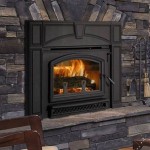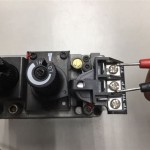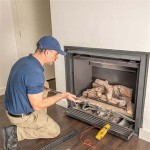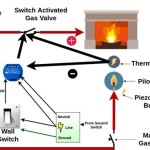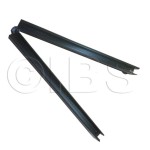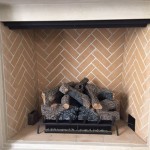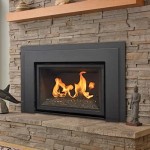How To Clean Out A Fireplace: A Comprehensive Guide
Maintaining a fireplace involves regular cleaning to ensure optimal performance, safety, and longevity. Soot, ash, and creosote accumulate over time, potentially leading to chimney fires and reduced heating efficiency. This article provides a detailed guide on how to clean out a fireplace effectively and safely, covering essential tools, step-by-step procedures, and important safety precautions.
Understanding the Importance of Fireplace Cleaning
Fireplace cleaning is not merely an aesthetic concern; it's a crucial component of home safety and maintenance. The buildup of creosote, a byproduct of incomplete combustion, is a primary hazard. Creosote is highly flammable and can ignite, causing a chimney fire that can spread to the rest of the house. Regular cleaning removes this dangerous substance, mitigating the risk of a fire. Moreover, accumulated ash can reduce the efficiency of the fireplace by impeding airflow and reflecting heat away from the room. A clean fireplace burns more efficiently, producing more heat with less fuel.
Beyond safety and efficiency, cleaning also helps preserve the integrity of the fireplace and chimney. Soot and creosote are corrosive and can damage the brickwork and mortar over time. By removing these deposits regularly, homeowners can prevent costly repairs and extend the life of their fireplace. Furthermore, a clean fireplace helps maintain a cleaner indoor environment by reducing the amount of ash and soot particles that can circulate in the air.
Gathering Necessary Materials and Tools
Before beginning the cleaning process, it is essential to gather the necessary materials and tools. This preparation ensures a smooth and efficient cleaning experience. The following items are typically required:
- Drop Cloth or Old Sheets: These are used to protect the surrounding floor and furniture from ash and soot.
- Dust Mask or Respirator: Essential for protecting the lungs from dust and ash particles.
- Safety Goggles: Protects eyes from dust and debris.
- Heavy-Duty Gloves: Protect hands from sharp edges and abrasive materials.
- Metal Shovel or Trowel: Used to scoop out ash from the firebox.
- Metal Bucket or Ash Can with a Lid: For safely disposing of the collected ash. It's crucial to use a metal container to prevent accidental fires.
- Stiff-Bristled Brush or Broom: Used to scrub the firebox walls and floor.
- Handheld Vacuum or Shop Vacuum with HEPA Filter: For removing fine ash particles after brushing. A HEPA filter is crucial to prevent the recirculation of fine particles back into the air.
- Spray Bottle with Water and Mild Detergent (Optional): For cleaning stubborn stains on the firebox walls.
- Fireplace Cleaner (Optional): Specifically designed for cleaning fireplace surfaces.
- Chimney Brush (If Cleaning the Chimney): A long-handled brush with wire bristles, sized to fit the chimney flue.
- Plastic Sheeting and Duct Tape (If Cleaning the Chimney): To seal off the fireplace opening to prevent soot from entering the room.
Having all these materials readily available will streamline the cleaning process and ensure a thorough job.
Step-by-Step Guide to Cleaning the Fireplace
Follow these steps to effectively clean a fireplace, ensuring both safety and a thorough cleaning.
Step 1: Preparation
Begin by ensuring the fireplace is completely cool. Allow at least 12-24 hours after the last fire before starting the cleaning process. Spread the drop cloth or old sheets around the fireplace to protect the surrounding floor and furniture. Wear a dust mask or respirator, safety goggles, and gloves to protect the respiratory system, eyes, and hands. Open windows and doors to ensure adequate ventilation during the cleaning process.
Step 2: Ash Removal
Using a metal shovel or trowel, carefully scoop out the ash from the firebox. Transfer the ash into the metal bucket or ash can, ensuring the lid is securely closed after each transfer. Avoid overfilling the bucket, as ash can be heavy. Be cautious when handling ash, as it can contain embers that may still be hot. Inspect the ash for any signs of remaining embers before disposal. If embers are present, allow them to cool completely before proceeding.
Step 3: Cleaning the Firebox
Once the ash is removed, use a stiff-bristled brush or broom to scrub the firebox walls and floor. Pay particular attention to areas with heavy soot buildup. For stubborn stains, mix water with a mild detergent in a spray bottle and apply it to the affected areas. Allow the solution to sit for a few minutes before scrubbing again. Alternatively, use a fireplace cleaner specifically designed for cleaning fireplace surfaces, following the manufacturer's instructions. After scrubbing, use a handheld vacuum or shop vacuum with a HEPA filter to remove any remaining ash particles. Ensure the vacuum nozzle is clean to prevent scratching the firebox surfaces.
Step 4: Cleaning the Fireplace Surround
Clean the fireplace surround, including the mantel, hearth, and any surrounding brick or stone. Use a damp cloth to wipe away any dust or soot. For stubborn stains, use a mild detergent and water solution. Avoid using harsh chemicals or abrasive cleaners, as these can damage the surfaces. Pay attention to any decorative elements, such as carvings or moldings, and clean them carefully. If the fireplace surround is made of wood, use a wood cleaner specifically designed for the type of wood.
Step 5: Cleaning the Fireplace Glass Doors (If Applicable)
If the fireplace has glass doors, clean them with a glass cleaner specifically designed for fireplace glass. These cleaners are formulated to remove soot and creosote without damaging the glass. Spray the cleaner onto the glass and wipe it clean with a soft cloth. Avoid using abrasive cleaners, as they can scratch the glass. For heavy soot buildup, use a razor blade scraper to carefully remove the deposits before cleaning with the glass cleaner.
Step 6: Chimney Cleaning (Optional, But Recommended Annually)
Cleaning the chimney is a more complex task and is often best left to professionals. However, homeowners can perform basic chimney cleaning themselves with the right tools and precautions. First, seal off the fireplace opening with plastic sheeting and duct tape to prevent soot from entering the room. Use a chimney brush, sized to fit the chimney flue, to scrub the interior of the chimney. Work from the top down, pushing the brush through the flue to dislodge any soot or creosote. Remove the plastic sheeting and vacuum up any soot that may have fallen into the firebox. It is highly recommended to contact a certified chimney sweep for a professional inspection and cleaning at least once a year to ensure the chimney is in good working order and free of any hazards.
Step 7: Disposal of Ash
Safely dispose of the collected ash. Ensure the ash has completely cooled before disposing of it. One option is to double-bag the ash in plastic bags and dispose of it with the regular trash. Another option is to use the ash as a fertilizer in the garden, as it contains beneficial minerals for plants. However, avoid using ash from treated wood or artificial logs, as these may contain harmful chemicals. Never dispose of ash in compost piles or near flammable materials.
Step 8: Final Inspection and Cleanup
Inspect the fireplace and chimney for any signs of damage or deterioration. Check the firebox walls and floor for cracks or loose bricks. Examine the chimney for any signs of damage, such as crumbling mortar or missing bricks. If any damage is found, contact a qualified professional for repairs. Remove the drop cloth or old sheets and clean the surrounding floor. Store the cleaning tools in a safe and dry place.
Safety Precautions
Several safety precautions should always be followed when cleaning a fireplace to prevent injury and ensure a safe cleaning process.
- Always Ensure the Fireplace is Cool: Never attempt to clean the fireplace while it is still hot. Allow at least 12-24 hours after the last fire before starting the cleaning process.
- Wear Protective Gear: Always wear a dust mask or respirator, safety goggles, and heavy-duty gloves to protect the respiratory system, eyes, and hands.
- Ensure Adequate Ventilation: Open windows and doors to ensure adequate ventilation during the cleaning process.
- Use Metal Containers for Ash Disposal: Always use metal buckets or ash cans with lids for safely disposing of the collected ash. Never use plastic containers, as they can melt or ignite.
- Handle Ash with Care: Be cautious when handling ash, as it can contain embers that may still be hot. Inspect the ash for any signs of remaining embers before disposal.
- Avoid Using Flammable Liquids: Never use flammable liquids, such as gasoline or kerosene, to clean the fireplace. These liquids can create a fire hazard.
- Be Cautious When Cleaning the Chimney: Cleaning the chimney can be dangerous, especially if working at heights. Consider hiring a professional chimney sweep for this task.
- Inspect the Fireplace and Chimney Regularly: Regularly inspect the fireplace and chimney for any signs of damage or deterioration. Contact a qualified professional for repairs if needed.
By following these safety precautions, homeowners can minimize the risk of injury and ensure a safe cleaning process.
Regular fireplace cleaning is essential for maintaining a safe and efficient heating system. By following the steps outlined in this guide and adhering to safety precautions, homeowners can effectively clean their fireplaces and enjoy the warmth and ambiance of a well-maintained fire.

How To Clean A Fireplace Diy Basics

Fireplace Ash Dump Service Full Chimney

How To Do A Proper Chimney Clean Out

Fireplace Cleanup And Wood Stove Chimneys Com

Best Way To Clean A Fireplace Stacy Risenmay

4 Ways To Clean A Fireplace Wikihow

How To Clean A Gas Fireplace The Proper Way

How To Properly Clean Out A Fireplace In Your Piedmont Home Zippy S

How To Care For Your Fireplace Gas Fireplaces Chimney Cleaning

How To Clean A Brick Fireplace The Family Handyman
Related Posts

